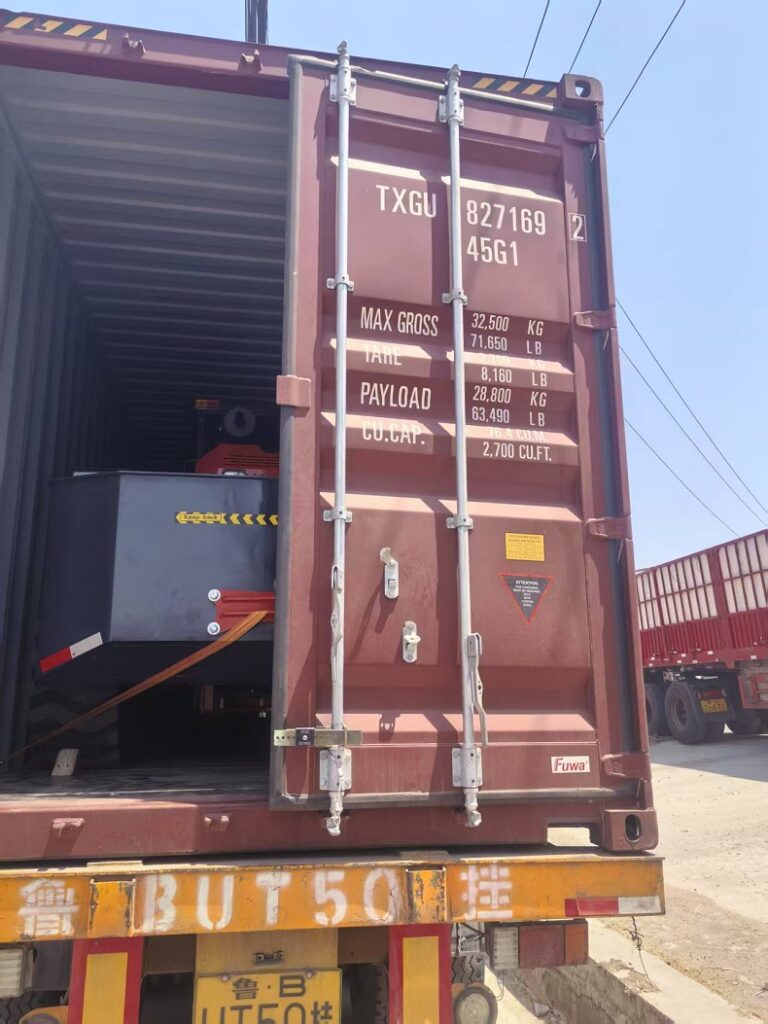 how to load a rough terrain forklift into a container
how to load a rough terrain forklift into a container
When preparing four-wheel drive (4WD) diesel rough terrain forklifts for shipment, proper handling during container loading is critical to ensure safety, compliance with shipping regulations, and protection of the equipment. Forklifts contain various fluids and electrical components that require special attention to prevent leaks, damages, or hazards during transportation. Below are key precautions and best practices to follow before and during loading.
1.Complete Drainage of Fluids
One of the most important steps before loading diesel forklifts into containers is to drain all potentially hazardous liquids. This includes:
- Diesel Fuel: Even small amounts of diesel fuel can pose a fire hazard during transit. Fully draining the fuel tank prevents leaks that can damage the container or other cargo.
- Engine Oil: Old or excess engine oil should be removed to avoid spills and environmental contamination.
- Hydraulic Oil: Since forklifts use hydraulic systems to operate the lifting mechanism, hydraulic oil is present in the system. Draining or ensuring the system is leak-free reduces the risk of oil leakage.
Why it Matters:
Draining fluids complies with international shipping safety standards and minimizes environmental risks. It also helps avoid penalties or shipment delays caused by hazardous cargo declarations.
2.Battery Disconnection and Insulation
Electrical safety is another crucial consideration. Diesel forklifts typically use a starting battery to power the engine. Before loading:
- Disconnect Battery Terminals: Remove the connection of both positive (+) and negative (–) cables from the battery terminals.
- Insulate Terminal Ends: Cover the exposed battery terminals with insulating caps or tape to prevent accidental short circuits or sparks.
Why it Matters:
Electrical shorts or sparks inside a confined container can lead to fire or explosion hazards. Insulating battery terminals and disconnecting power ensure compliance with transportation safety regulations and protect personnel handling the containers.
3.Additional Loading Safety Measures
Besides fluids and electrical precautions, consider the following:
- Clean and Dry Equipment: Wash the forklift and ensure it is dry to avoid contamination or rust.
- Secure Loading: Use heavy-duty ratchet straps and wooden chocks to firmly secure the forklift inside the container, preventing movement during transit.
- Document and Photograph: Record the condition of the forklift and container before and after loading with detailed photos for liability and customs documentation.
4.Summary
Proper preparation of four-wheel drive diesel rough terrain forklifts before container loading ensures safe shipment and compliance with international logistics standards. Draining all fluids and disconnecting the battery reduce risks of leaks, fires, and electrical hazards. Combined with careful securing and documentation, these steps protect your valuable equipment and provide peace of mind throughout the shipping process.